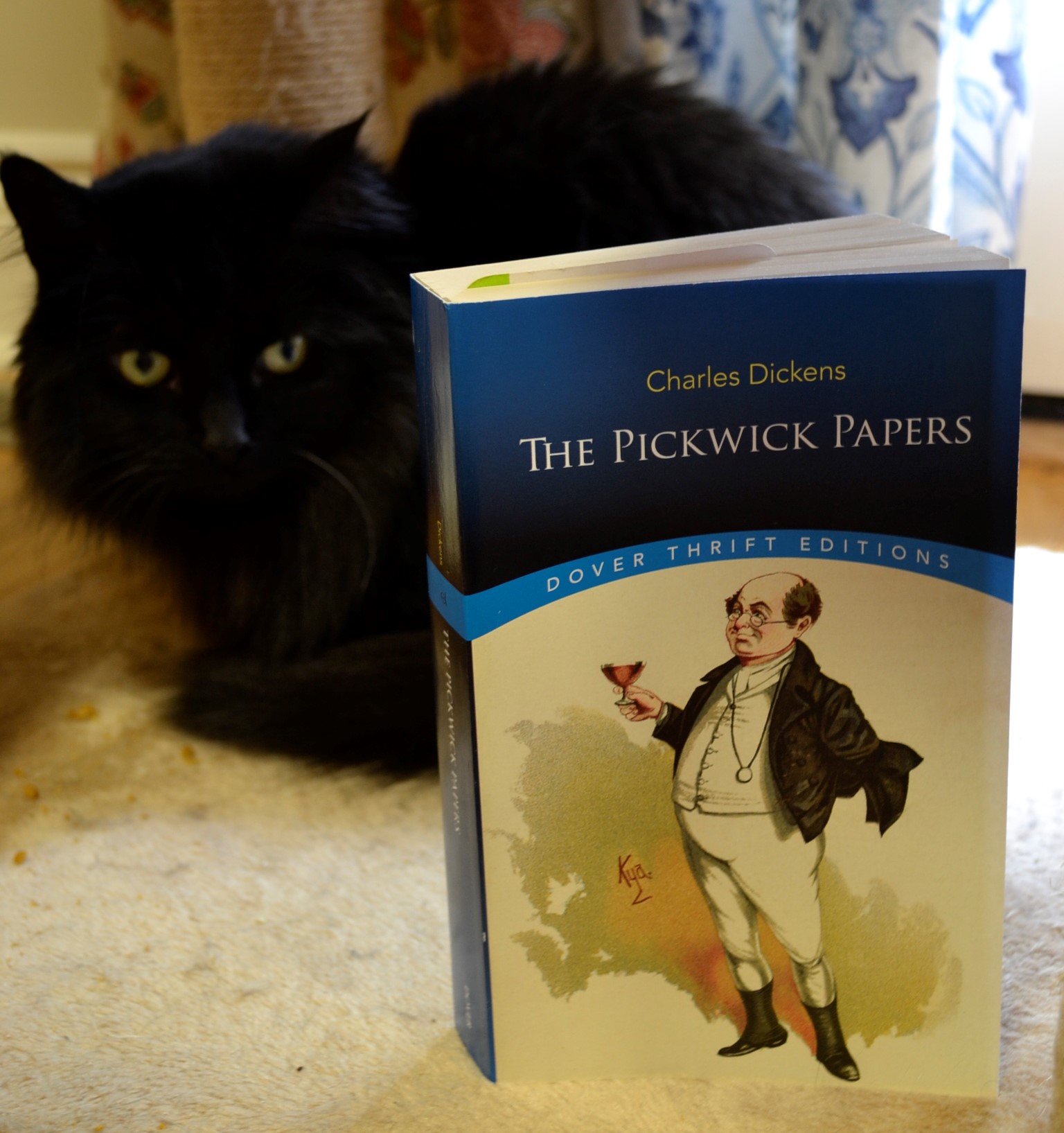Getting Ready for the Road
One of the first things I do when my lovely spouse and I decide to go on a road trip is to make a playlist or at least add songs to a playlist I’m currently listening to. I then make sure all of the phones are charged while we discuss if we’re packing a lunch or stopping for one. We get everything ready and, in the morning, we pile into the car.
It’s hard to believe that the car is nearly ten years old now. We bought it right before we left our hometown and it’s a little hatchback that’s been with us through thick and thin. I’m always grateful for the air conditioning and the comfortable seats. It needs a bit of body work this year, but I’m hoping to get many more years out of it.
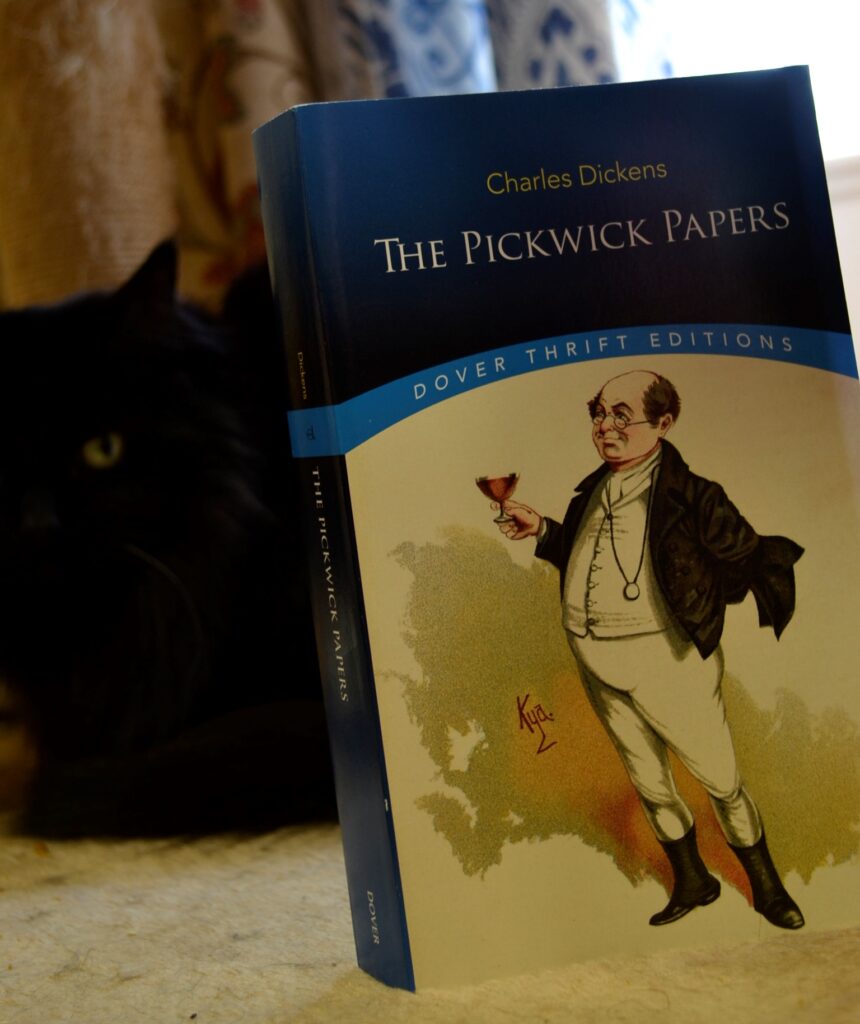
When I think about our little car and the time spent in it, I have a hard time imagining what it must have been like travelling by coach across the England. Though Dickens does make it seem like quite an adventure — even without the air conditioning.
Before There Were Trains
Charles Dickens’ The Pickwick Papers (or The Posthumous Papers of the Pickwick Club) is a long, but pleasant journey through England via horse and carriage. There are adventures in inns, adventures in small town elections, cricket matches, and country customs. The success of The Pickwick Papers is what launched Dickens’ career, and it is one of his most light and boisterous works. He works with the archetypal characters present in much of Victorian English literature and puts them through twists and turns.
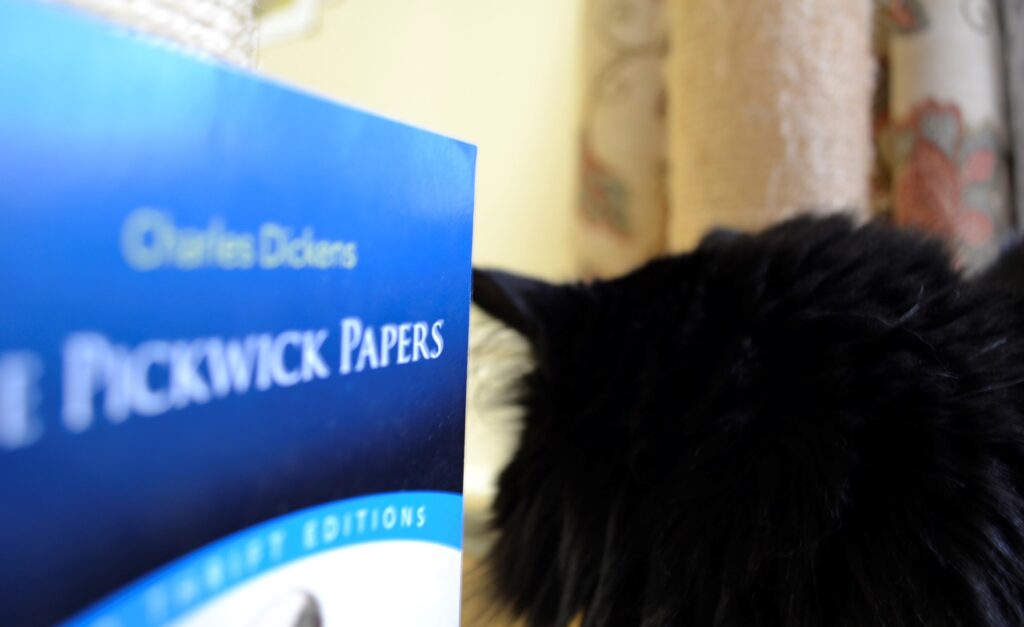
The Pickwick Papers is a novel worth reading for anyone interested in early Victorian life, because it presents scene after scene described in vivid detail. Dickens is always a master of detail and his style lends itself to an easy study not just of customs themselves but the attitudes around them and the minute procedures of their execution. Dickens is also a master of the tongue-in-cheek style of writing that makes great use of witty phrases, irony, and poetic reversals of fate. Dickens is an author that begs to be read aloud to a captive audience in front of the hearth after a hearty meal — which is why I read A Christmas Carol to my lovely spouse in the days leading up to Christmas.
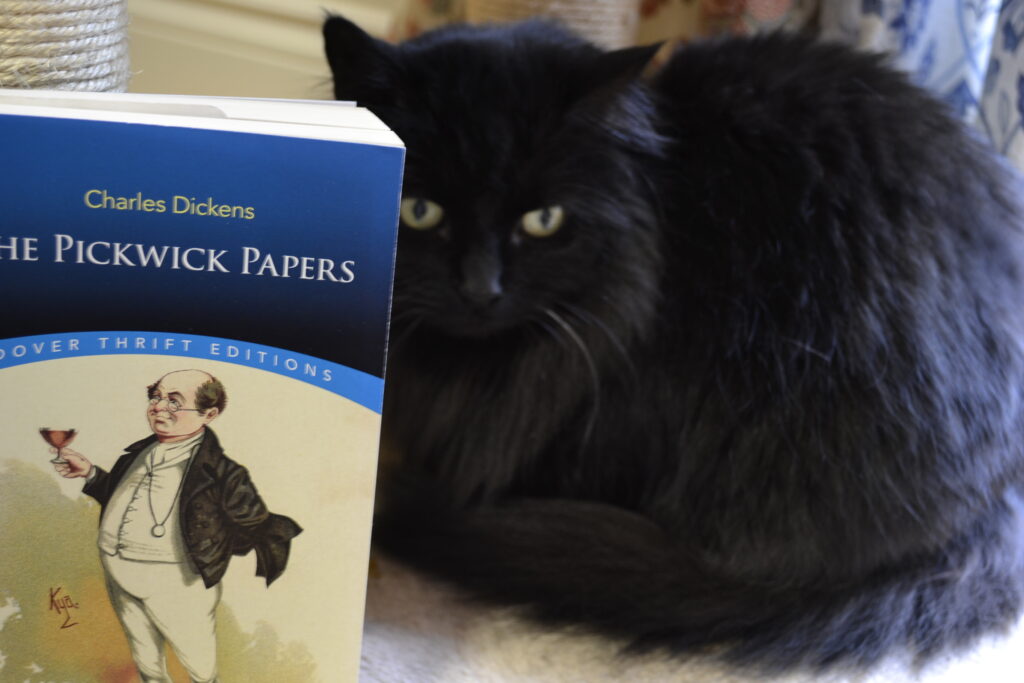
Though I will warn that, at nearly seven hundred pages, The Pickwick Papers is a bit long to read aloud in the course of a few afternoons.
A Joyful Look at the Early Victorians
One of things that I love about this novel is how it looks at Victorian life. I’ve read plenty of novels about the darker aspects of it and have learned a lot from them. But at the same time, there are times when I want a lighter read that has more laughter and less tears. That’s just what Dickens provides. He writes about daily life and daily problems and the joys of being alive at this time in history. He wants the reader to laugh at Pickwick’s constant pickles and misfortunes. We’re meant to celebrate with them at Christmas stories and customs. We’re meant to go along with the antics of Manor Farm at Dingley Dell.
Photographs and history books sometimes create the impression that the Victorians were a serious, severe lot that didn’t have a lot of fun. But that simply isn’t true, and Dickens illustrates this fact chapter after chapter.
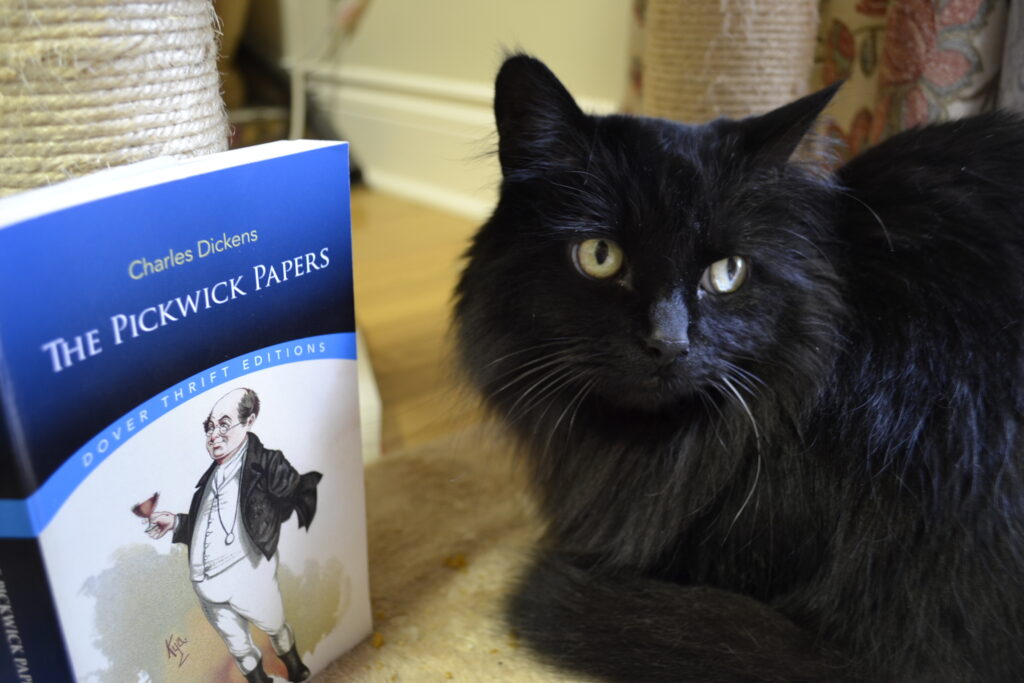
While it’s lovely to read about the joys of long ago, that the reader mustn’t forget that some of the ideas presented are not modern ones and reflect old beliefs that are sexist, racist, and classist and have no place in the modern era. It can be jarring to see them there in all their starkness in the midst of Dicken’s picaresque narrative, so it’s best to prepare yourself.
How to Read Dickens
I think it’s common knowledge that Dickens’ novels were usually published serially and that definitely is the case with The Pickwick Papers. The structure is obviously episodic and goes from event to event and place to place in a way that pulls the reader along through the happy chaos. Dickens uses this structure to maximal effect and it makes the book something very special.
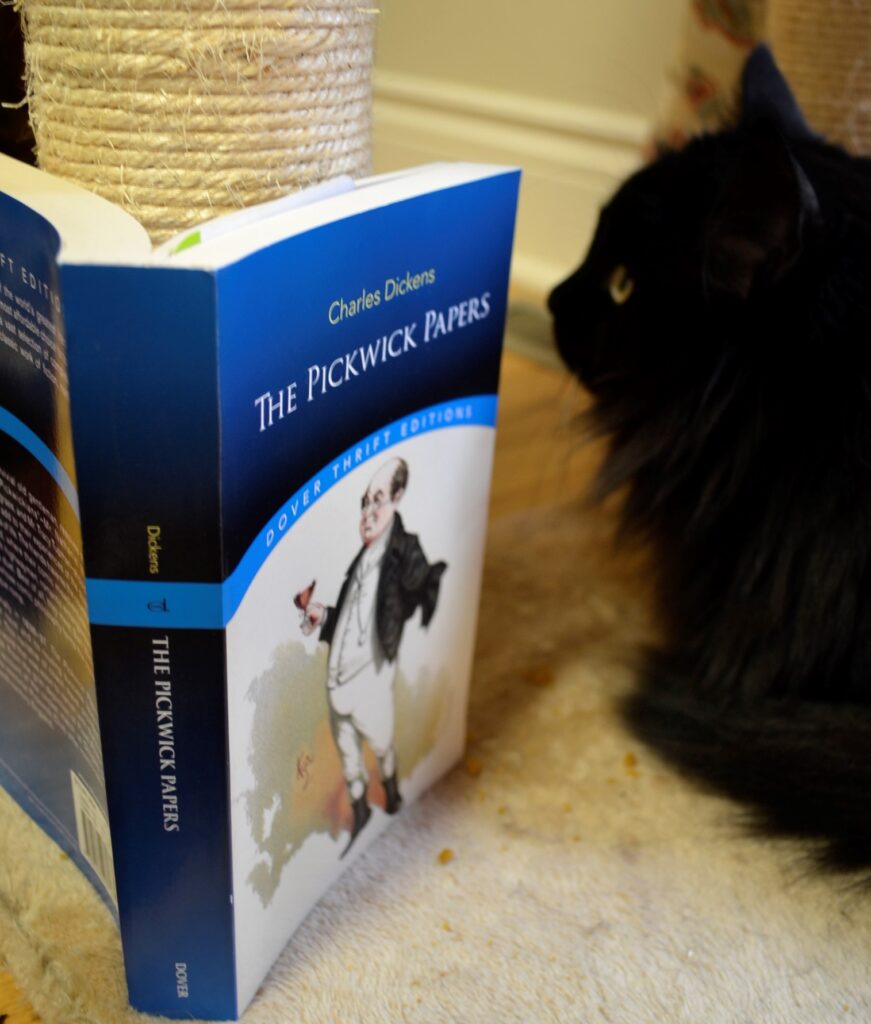
However, there is a pitfall to this structure that is emphasized by Dickens’ particular style of densely packed writing. That pitfall is that it’s difficult to read this book for long stretches of time. It’s best to read three or four chapters (which would have been an installment when it was originally published) and then take a brief break and come back to it. If you try to read too much at once all of the characters and events tend to get overwhelming and cause a bit of a reading block.
Reading the book in pleasant smaller installments like it was initially published is probably the best way to enjoy the novel. I wouldn’t recommend trying to read it all in a few days.
A Brief Look at Family Vacations
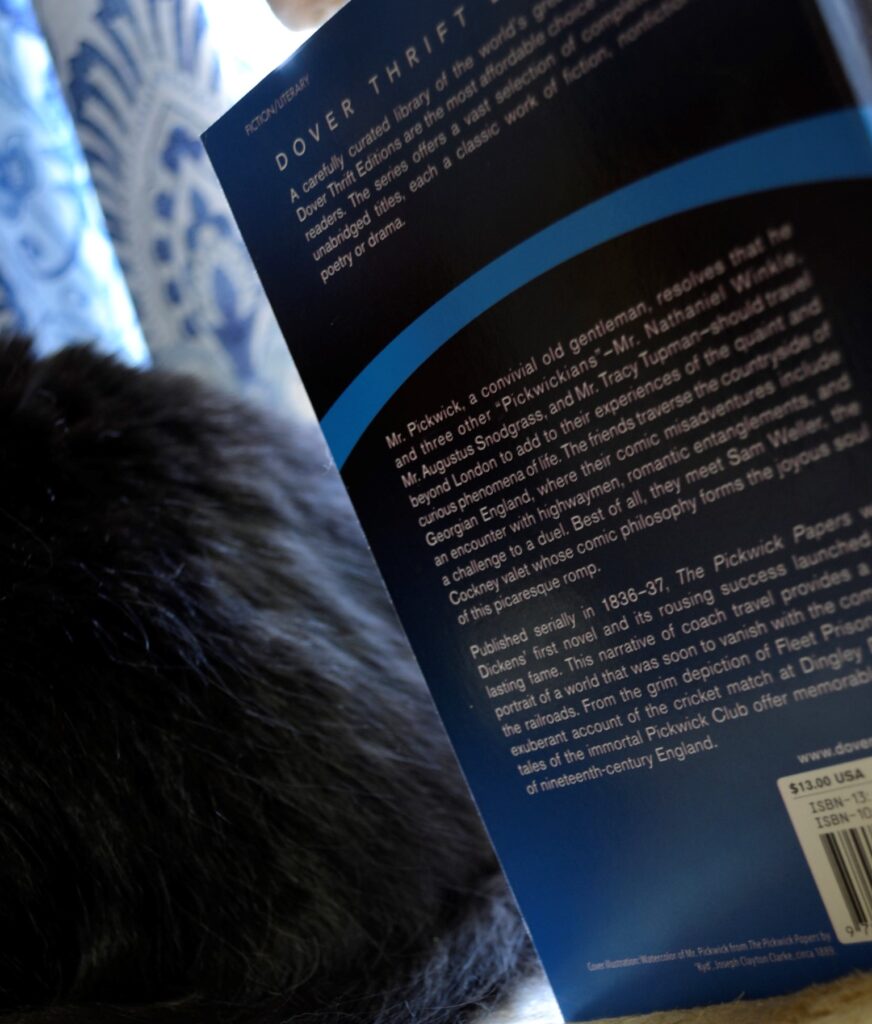
Next week the road trip takes me back to 18th century — 1771, to be specific — to discuss Tobias Smollett’s Humphrey Clinker. It details what amounts to a family vacation, and so I’ll be talking about travelling with family — which, to us, means travelling with cats.
